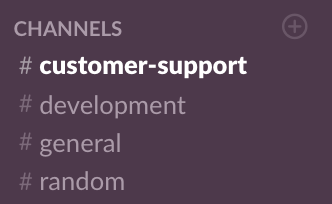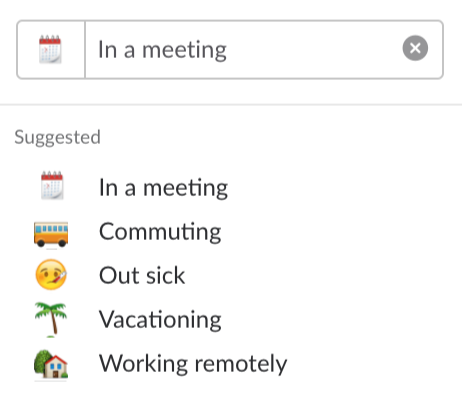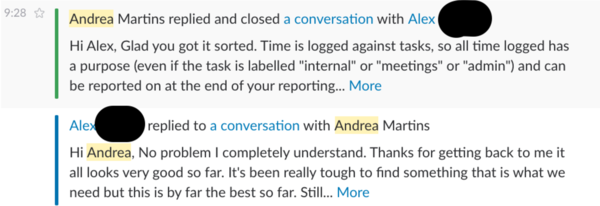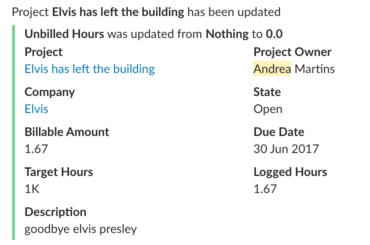You know how, every now and then, you discover a workplace productivity app that actually does what it promises and makes life easier?
Well, we did and it’s called Slack. And that’s why, alongside our favourite project management app, Trigger, Slack is our favourite tool in the office and we’d all be genuinely lost without it.
What is Slack?
Slack is a real-time, cloud-based, messaging and collaboration platform. It was founded by Stewart Butterfield in August 2013 to use in his computer game company at the time.
A short three and half years later, Fortune reported in April 2016 that Slack had grown to an incredible value of $3.8 billion, with a daily user base of 2.7 million fans. Slack’s crazy growth curve confirms that we are not the only team that loves this brilliant productivity tool.
Why the name Slack?
According to Wikipedia, the name Slack is an acronym for “Searchable Log of All Conversation and Knowledge”.
How much does Slack cost?
Slack has both free and paid options. According to Fortune, approximately 30 percent of Slack’s user base don’t pay a cent. This is understandable, considering that for free, you can have (almost) unlimited users per channel and you can search up to 10,000 of your team’s messages.
Why do we love Slack?
1. We get instant answers
Waiting for your colleague to sift through their emails and decide which emails are a priority to answer can be both ineffective and frustrating for the whole team, especially when you have very quick questions that can be solved with very quick answers.
Slack’s real-time messaging is therefore particularly perfect for: instant Q&A: quickly seeking an opinion or approval; and/or updating the team with quick messages of all shapes and sizes.
For example: “Jen, did you get approval for us to start work on Client ABC’s social media?” “Team: Coffee machine repair guy coming at noon” “Jack, want a red or orange button on our new home page?”
These are quick questions or updates that don’t need emails or someone to get up from their desk and walk downstairs to ask a colleague for an answer.
If you facilitate a culture of speed, that’s exactly what you’ll get. So if it’s something quick, we use Slack. For everything else (especially client related), we use Trigger. Together, this means that unlike other businesses, we very rarely experience internal email overwhelm
2. We see what we want to see
Slack gives you three main options for messaging: direct messages; group channels; and private channels. This is hugely beneficial to our workflow because it means that everyone only receives (and/or can choose to read) only the messages that affect them directly.
Here’s an example of a private channel. In our case, we have remote workers who really don’t care if the coffee machine is broken today or if we need a volunteer to lock up the office tomorrow. So, private channels are a godsend.

Here’s an example of some of our public (opt-in) channels in our Trigger team. As with any channel, it’s label changes to a bold white if there are new messages in there to read. (You also have the option for desktop and/or mobile push notifications.)

And here’s an example of the direct messaging channel. Anyone who you have directly messaged recently will show up in that list for easy access.

3. We know our team’s movements
Most teams these days are not confined to the same four walls, 9am-5pm. Team members are working flexible hours, travelling interstate or abroad, out and about for meetings, or needing to close the office door to block out the world and get stuff done.
As a result, keeping track of everyone’s movements and knowing who (and when) are best to message or call, can be tricky - even if you have your Trigger and Google calendars synced.
With Slack, you can see who’s online (green circle), who’s offline (empty circle), who’s online but has their notifications switched to snooze mode (green circle with “Z”) and who’s both offline and switched to snooze mode (empty circle with “Z”).
You can also set icons next to your name for when you are “working remotely”, “in a meeting”, “commuting”, “out sick”, “vacationing”, and well, anything you’d like because you can customise the icons and messages however you choose.
Whilst this might sound more fun that practical, these features in Slack are actually extremely useful for knowing who might reply quickly, who will be back online soon and who you might need to pick up the phone and call directly if you need a quick answer to an urgent request.

4. We are kept in the loop
Slack has an API that allows you to integrate many of your favourite applications (to receive their notifications in your Slack channels), including Trigger.
For example, we use Intercom for our customer service and we’ve set up Slack to integrate with Intercom. When we get a new message in Intercom, it feeds directly into our Slack notification (and on-screen notifications).
Here’s how the Intercom message feed looks in our Slack #customer-support channel:

We have similar integrations set up with GitHub and Bugsnag (for our development work).
Here’s how a GitHub message feed looks in our Slack #development channel:

And of course, we have a Slack integration with Trigger.
Here’s how one of our Trigger notifications looks in our nominated Slack channel (and yes, you can set your Trigger notifications up for different projects to feed into different Slack channels):

Even if you turn your desktop notifications off, the benefit of these Slack feeds for team members and managers is that, at any given time, you can run your eyes down your team’s Slack feeds and get a quick and insightful overview of everything that’s been going on in team conversations and client projects, on any given day of your choosing.
5. We can upload files easier than in Google Docs
Slack lets you attach, drag and drop documents, screenshots, PDFs, images, animated gifs and videos directly into conversations, from your computer, Google Drive and Dropbox.
So, if you’re adding a file to a group channel, everyone can easily access the file and you don’t need to clog up emails, worry about forgetting to add someone, or waste time creating the email and adding everyone.
Plus, you can upload multiple files and images at once. Sounds basic, but we’re forever frustrated that Google only allows you to upload one image at time in a Google Doc.
Uploading files to Slack is so much easier than uploading files to Google Docs.

6. We can search conversations
Slack has a user-friendly search box that makes it very easy to type in any term you’re looking for and get results displayed instantly.
This comes in very handy when we forget to copy/paste or screenshot a conversation or approval over to our relevant Trigger task for project management and record-keeping.

7. We love how Slack oozes happy
When you log in to Slack, you are greeted with a (semi) random message that makes you feel loved. Who doesn’t enjoy a (semi) personal, happy message to start their day?




Trigger-to-Slack Integration
So, if your team is overwhelmed with email and meetings that drag on for too long, maybe try Slack. It’s an integral part of our productivity workflow and we recommend it 100 percent.
If you’re already using Trigger as your time tracking and project management solution, you can set up your Trigger-to-Slack integration here.
If you’re not in our Trigger community yet, we invite you to try our 30-day free trial here (no credit card required).
As the SlackBot says…
“We like you”
So, see you inside Trigger!